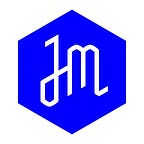The Jewish Museum Lends Three Menorahs to the Office of the Vice President for Hanukkah
The Jewish Museum is thrilled to once again lend Hanukkah menorahs from its collection to the Office of the Vice President for Hanukkah.
In Vice President Kamala Harris’s office is an iconic menorah made by Ludwig Yehuda Wolpert in New York in 1958. In Second Gentleman Douglas Emhoff’s office is a menorah made in Hanau, Germany, by a popular silver manufacturer — Gebrüder Gutgesell — that ended up in the Netherlands following the Nazi invasion. A third menorah made in Eastern Europe in the late nineteenth century was used at a lighting ceremony during a Hanukkah party hosted by Vice President Kamala Harris and Second Gentleman Douglas Emhoff at their residence on the first night of Hanukkah on Sunday, December 18 (see photo above).
This is the second time the Jewish Museum has lent menorahs from its collection to the Office of Vice President for Hanukkah (read more here). The Museum also lent menorahs to the White House in 2001 and 2011 (read about those visits here).
Learn more about each Hanukkah menorah lent to the Office of the Vice President this year, below.
The sleek lines, symmetrical proportions, and minimalist appearance of this iconic Hanukkah menorah, displayed in the Vice President’s office, are characteristic of the work of Ludwig Yehuda Wolpert. Wolpert was a trailblazer in the field of Jewish ceremonial art, blending ceremonial traditions with Modernist design. Trained by Bauhaus silversmiths, he created novel Jewish ceremonial objects that exhibit the influence of abstraction and the refined attention to surfaces and materials of the midcentury. Wolpert focused on drawing out the essential beauty of the metal. The artist brought his pioneering designs to the Jewish Museum where he founded the Tobe Pascher Workshop for contemporary Judaica in 1956, which he led until his death in 1981. This menorah — an early product of that workshop — represents the vibrant, fresh approach to ceremonial art within the American Jewish community at that time in the aftermath of the Holocaust.
The story of this menorah, displayed in the Second Gentleman’s office, is extraordinary. Though the menorah was made in Hanau, Germany by a popular silver manufacturer — Gebrüder Gutgesell — the menorah ended up in the Netherlands, ultimately hidden from Nazi invasion. The owners who had purchased the menorah in Germany moved to Antwerp (the Netherlands) in the early twentieth century, bringing this treasured possession with them. Escaping Nazi persecution in the 1930s, the family left behind this menorah when they fled to the United States. Miraculously this menorah was untouched by German officials, surviving as a precious trace of the family’s personal survival and history. The donors chose the Jewish Museum as the home for this menorah where its story lives on.
This menorah used for the lighting ceremony at the Vice President’s residence, with its ornate scrollwork and interlacing pattern evocative of a tree of life, would have echoed the elaborate and lively sanctuaries of Eastern European synagogues. Similar ornamentation was once seen on the painted wooden ceilings of such synagogues and adorning the chandeliers that lit those sacred communal spaces. This menorah’s copper alloy material and the Hebrew dedicatory inscription around its bold base are characteristics seen on Hanukkah lamps from the region. This menorah was once a treasured possession: its inscription tells us that it was dedicated to a communal society of Smarhón (Belarus) — a mutual aid society that sought to help their Jewish community in Eastern Europe and recent immigrants to America — by Rabbi Yisrael Yehudah Taver and Rabbi Arieh Yehudah, the sons of Rabbi Naftali Hertz of Danishevksy in the year 5667, translated in the Gregorian calendar as 1906/07. The Jewish Museum’s Curator of Judaica Abigail Rapoport brings to light new research on this unique menorah in this blog post.
The Jewish Museum’s collection of Hanukkah menorahs is the largest in the world at nearly 1,050 pieces and was amassed over the 118 years of the Museum’s existence. Explore some of the collection here. This year, Hanukkah begins on the evening of Sunday, December 18, and runs through Monday, December 26.
